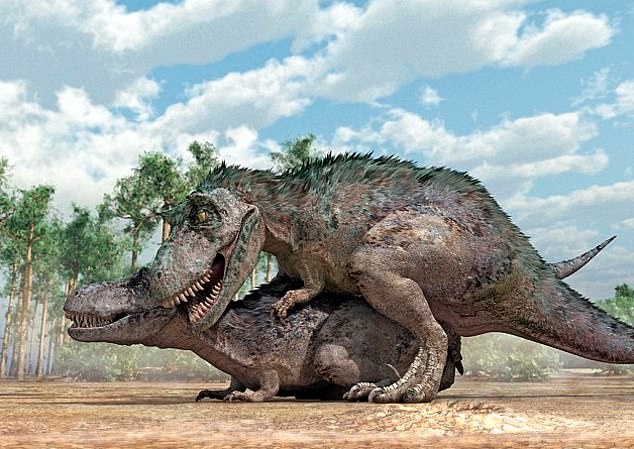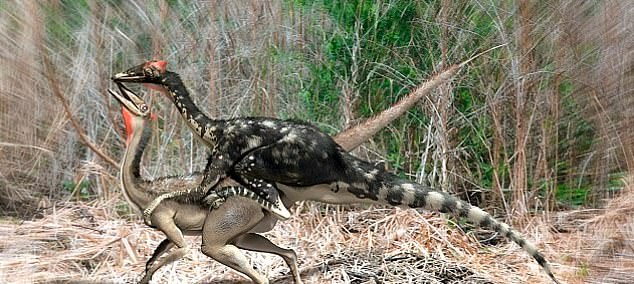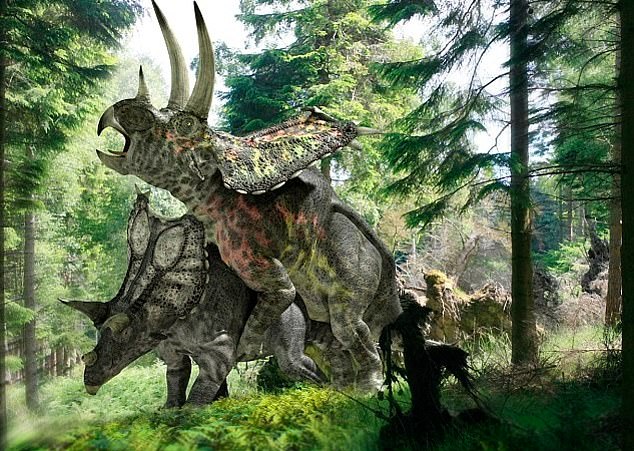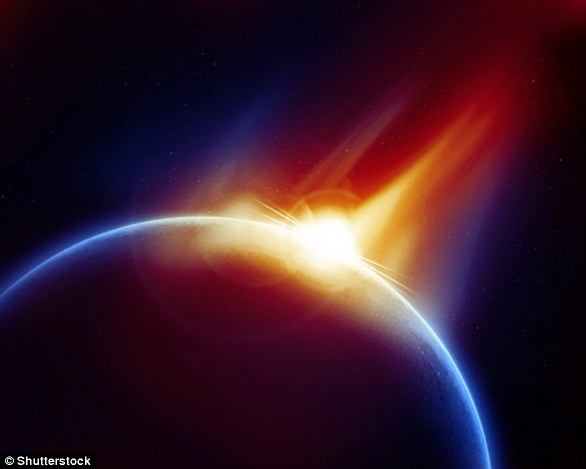Even though they lived more than 60 million years ago, scientists know what dinosaurs ate, what they looked like, and even how they died.
How exactly these extinct creatures had sex, meanwhile, has proved something of a mystery – but now an expert sheds light on this most prehistoric of intercourse.
American paleontologist Riley Black says dinosaurs probably had penises and mated in a similar way to today’s mammals, with the male mounting the female.
However, dinosaur species that had large spiky tails such as Stegosaurus may have had to get ‘creative’ to avoid causing themselves injury.
‘For more than a century, paleontologists have wondered about how dinosaurs mated,’ Ms Black says in a piece for Smithsonian Magazine.
‘Comparisons to living birds and crocodylians hint that individual dinosaurs usually had a phallus or a clitoris, although hard evidence of such structures has not yet been uncovered.’
Dinosaurs roamed Earth for about 165 million years, but had their demise 66 million years ago when our planet was hit by a massive asteroid.
All non-bird dinosaurs, pterosaurs, ammonites and most marine reptiles perished, whilst birds, crocodiles, and turtles survived, as well as some mammals – from which humans evolved.


The specifics of dinosaur sex have remained a mystery, largely because reproductive organs don’t fossilize.
What’s more, no fossils of dinosaurs caught in the act have ever been found – but researchers can make educated guesses.
The process started with some sort of courtship ritual, likely involving scratching at the ground and coordinated movements a bit like a ‘dance’.
In 2016, paleontologists revealed evidence of dinosaur ‘mating grounds’ in what is now western Colorado.
At the site, large, carnivorous dinosaurs gathered to scratch at the ground with their feet – a courtship display to attract mates.
This form of ‘prehistoric foreplay’ – evidenced by scrape marks in the dusty ground – was similar to that of some modern birds.
Some dinosaur species are thought to have evolved elaborate horns in different colours and shapes to attract the attention of potential suitors.
Once the dinosaurs had paired up, the male likely would have mounted the female from behind, similar to dogs and other mammals today.



‘All dinosaurs used the same basic position to mate,’ said Dr Beverly Halstead, a legendary English paleontologist who was one of the first to tackle the subject.
‘Mounting from the rear, he put his forelimbs on her shoulders, lifting one hind limb across her back and twisting his tail under hers.’
Luis Villazon, a zoologist and scientist educator for the BBC, said dinosaurs would have mated ‘a bit like giraffes’.
Due to the sheer weight, the male – weighing as much as 80 tonnes in some cases – dinos would have mounted and dismounted the female as quickly as possible.
‘The actual moment of copulation was probably very brief, to minimise the mechanical stresses on both partners,’ Villazon told Science Focus.
‘The male may have thrown one leg over the female’s tail and used a relatively long, extensible penis to reach the female’s genitalia.’
The really big dinosaurs might have just fallen over on land and so would have needed water to provide support.
Overall, the Stegosaurs – which had plates and spikes on its back and tail – would have had to use the most ‘creative’ positions, according to Ms Black.


Spikes on the tail may have proved a dangerous obstacle for whichever Stegosaurs was on top – unless both were ‘laying on the ground and going belly to belly’.
‘The more spiky Stegosaurs would have needed to be the most creative out of all of them,’ Ms Black told IFL Science.
The academic hopes that paleontologists will make new discoveries about dinosaur sex lives in the years to come – such as evidence of two dinosaurs that perished while mating.
‘Courting and copulating dinosaurs could have left their distinctive footprints on an ancient surface, showing how they moved and positioned in relation to each other,’ Ms Black added.
‘For as many mysteries remain about dinosaur sex, the fossil record still likely holds a wealth of surprises about how dinosaurs made the earth shake.’

